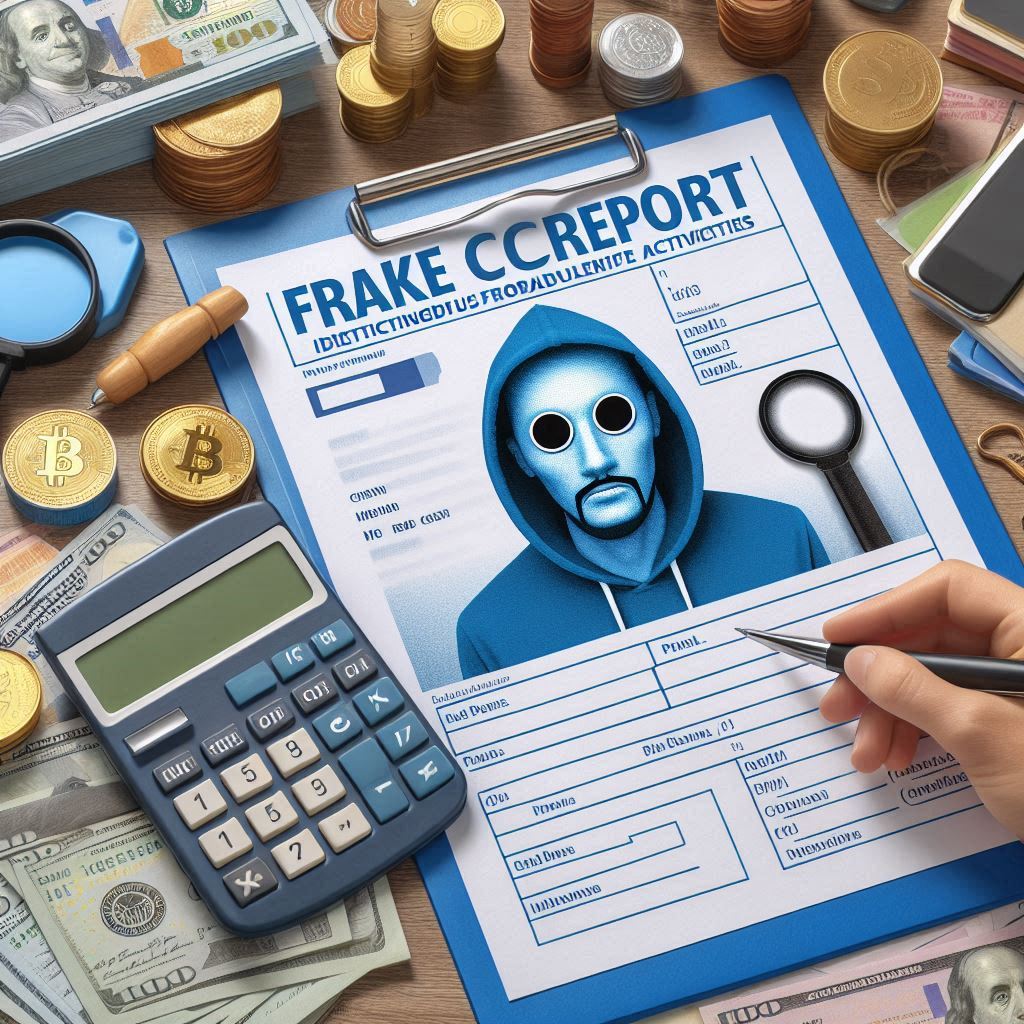Introduction to fake credit report templates
Have you ever wondered how fraudsters manipulate credit reports to deceive businesses and individuals? Fake credit report templates play a significant role in their deceptive schemes. Understanding how these templates are used can help us identify fraudulent activities and protect ourselves from falling victim to financial scams. Let’s dive into the world of fake credit reports and uncover the red flags that can save us from potential fraud!
How fraudsters use fake credit report templates
Fraudsters are becoming increasingly sophisticated in their methods of using fake credit report templates to deceive businesses and consumers. By creating false financial information, they can manipulate credit scores and histories to appear more creditworthy than they actually are. This allows them to obtain loans, lines of credit, or even make large purchases under false pretenses.
These criminals often target individuals with limited knowledge about how to properly analyze a credit report for inconsistencies or inaccuracies. By presenting seemingly legitimate documents, fraudsters can easily pass off their deceptive practices without raising suspicion.
Moreover, the rise of digital technology has made it easier for scammers to produce counterfeit documents that closely resemble authentic credit reports. With the ability to forge signatures and official logos, these fake templates can deceive even the most vigilant eyes.
It is crucial for both businesses and consumers to remain vigilant when reviewing any financial documentation provided by individuals or entities. Identifying red flags such as discrepancies in account balances, unfamiliar accounts opened, or unexplained drops in credit scores can help prevent falling victim to fraudulent activities orchestrated through fake credit report templates.

Benefits of using fake credit report templates to identify fraudulent activities
Fake credit report templates can be valuable tools in detecting fraudulent activities. By examining these templates, businesses and consumers can uncover discrepancies or inconsistencies that may indicate potential fraud. These templates provide a baseline for comparison against legitimate credit reports, allowing for easier identification of red flags.
One key benefit is the ability to spot inaccuracies in personal information or credit history that do not align with the individual’s financial behavior. Fraudsters often manipulate these details to create a false narrative of creditworthiness. Additionally, fake credit report templates can reveal unauthorized accounts or inquiries that signal identity theft.
Furthermore, analyzing these templates can help prevent financial losses by catching suspicious activities early on. This proactive approach empowers individuals and companies to take swift action to safeguard their finances and reputation.
Common red flags found in fake credit reports
When analyzing credit reports, it’s crucial to be on the lookout for common red flags that may indicate fraudulent activities. One red flag to watch out for is inconsistencies in personal information such as mismatched addresses or incorrect social security numbers. These discrepancies could signal that the report has been tampered with or fabricated.
Another warning sign is unusual account activity, like sudden spikes in credit limits or unauthorized inquiries from unknown creditors. These anomalies could point towards identity theft or fraudulent transactions taking place without your knowledge.
Moreover, keep an eye out for accounts you didn’t open or unrecognized debts listed on the report. This could suggest someone has used your information to open accounts fraudulently and accumulate debt under your name.
Additionally, discrepancies between multiple credit reports from different bureaus can also raise suspicions of a fake credit report template being used to deceive lenders and businesses. By staying vigilant and spotting these red flags early on, you can protect yourself from falling victim to financial fraud schemes.
How businesses and consumers can protect themselves from falling victim to fraud through credit report analysis
Businesses and consumers can safeguard themselves from falling prey to fraud by conducting thorough credit report analysis. By regularly reviewing credit reports, they can detect any discrepancies or unauthorized activities promptly. It’s essential to keep an eye out for unusual transactions, unfamiliar accounts, or sudden drops in credit scores that could indicate fraudulent behavior.
Moreover, staying informed about the latest scams and phishing tactics can help prevent identity theft and financial fraud. Implementing strong security measures such as multi-factor authentication for online accounts and using secure payment methods adds an extra layer of protection against cyber threats.
Educating employees on how to identify potential red flags in credit reports and providing training on data security best practices is crucial for businesses looking to mitigate risks associated with fraudulent activities. Additionally, encouraging consumers to monitor their credit reports regularly and report any suspicious activity immediately can help prevent further damage to their financial well-being.

Steps to take if you suspect a fraudulent credit report
If you suspect a fraudulent credit report, it’s crucial to act swiftly and decisively. The first step is to verify the information by contacting the credit reporting agencies directly. Request a copy of your official credit report from all three major bureaus to compare against any suspicious documents you have received.
Next, reach out to the financial institutions listed on the questionable report to alert them of potential fraud. It’s important to monitor your accounts closely for any unusual activity that may indicate identity theft or unauthorized transactions.
Consider placing a fraud alert or even a credit freeze on your accounts as an added layer of protection. This can help prevent further damage while you investigate the situation and work towards resolving any discrepancies.
File a complaint with the Federal Trade Commission (FTC) and consider reporting the incident to local law enforcement if necessary. Keeping detailed records of all communications and steps taken will be invaluable in rectifying any fraudulent activities associated with your credit report.
Conclusion
In the digital age, fake credit report templates are a potent weapon for identifying fraud. Vigilance in analyzing reports can reveal red flags and inconsistencies that signal potential scams. Regular scrutiny and swift action against suspicious activities can help prevent financial fraud. Knowledge is key to protecting your finances – stay informed, proactive, and utilize all available resources. By leveraging these templates, individuals and businesses can strengthen their defenses against evolving threats in the realm of financial security.





